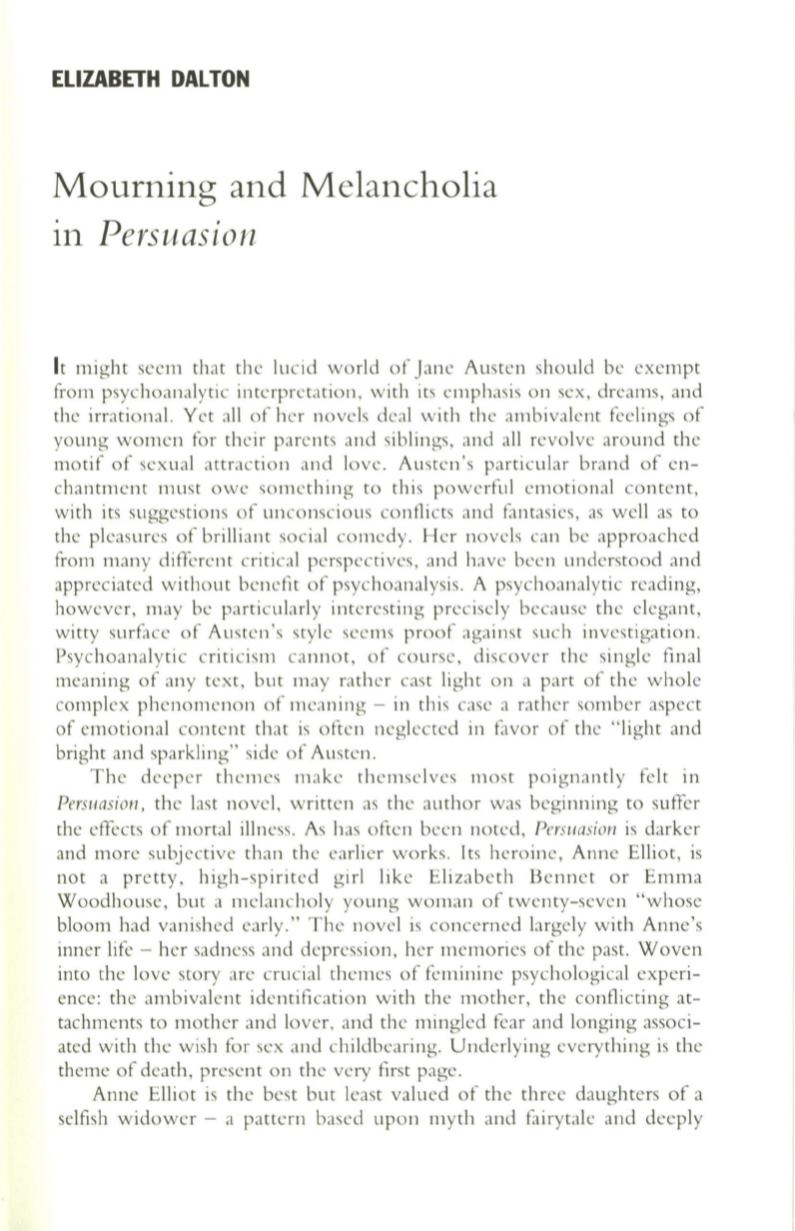
ELIZABETH DALTON
Mourning and Melancholia
in
Persuasion
It
might seem that the lucid world of Jane Austen should be exempt
from psychoanalytic interpretation, with its emphasis on sex, dreams, and
the irrational. Yet all of her novels deal with the ambivalent feelings of
young women for their parents and siblings, and all revolve around the
motif of sexua l attraction and love. Austen's particular brand of en–
chantment must owe something to this powerful emotional content,
with its suggestions of unconscious conflicts and fantasies, as well as to
the pleasures of brilliant social comedy. Her novels can be approached
from many different critical perspectives, and have been understood and
appreciated without benefit of psychoanalysis. A psychoanalytic reading,
however, may be particularly interesting precisely because the elegant,
witty surface of Austen's style seems proof against suc h investigation.
Psychoanalytic criticism cannot, of course, discover the single final
meaning of any text, but may rather cast light on a part of the whole
complex phenomenon of meaning - in this case a rather somber aspect
of emotional content that is often neglected in favor of the "light and
bright and sparkling" side of Austen.
The deeper themes make themselves most poignantly felt in
Persllasion,
the last novel, written as the author was beginning to suffer
the effects of mortal illness. As has often been noted,
Persllasion
is darker
and more subjective than the earlier works. Its heroine, Anne Elliot, is
not a pretty, high-spirited girl like Elizabet h Bennet or Emma
Woodhouse, but a melancholy young woman of twenty-seven "whose
bloom had vanished early." The novel is concerned largely with Anne's
inner life - her sadness and depression, her memories of the past. Woven
into the love story are crucial themes of feminine psychological experi–
ence: the ambivalent identification with the mother, the confli cting at–
tachments
to
mother and lover, and the mingled fear and longing associ–
ated with the wish for sex and childbearing. Underlying everything is the
theme of death, present on the very first page.
Anne Elliot is the best but least valued of the three daughters of a
selfish widower - a pattern based upon myth and fairy tale and deeply


